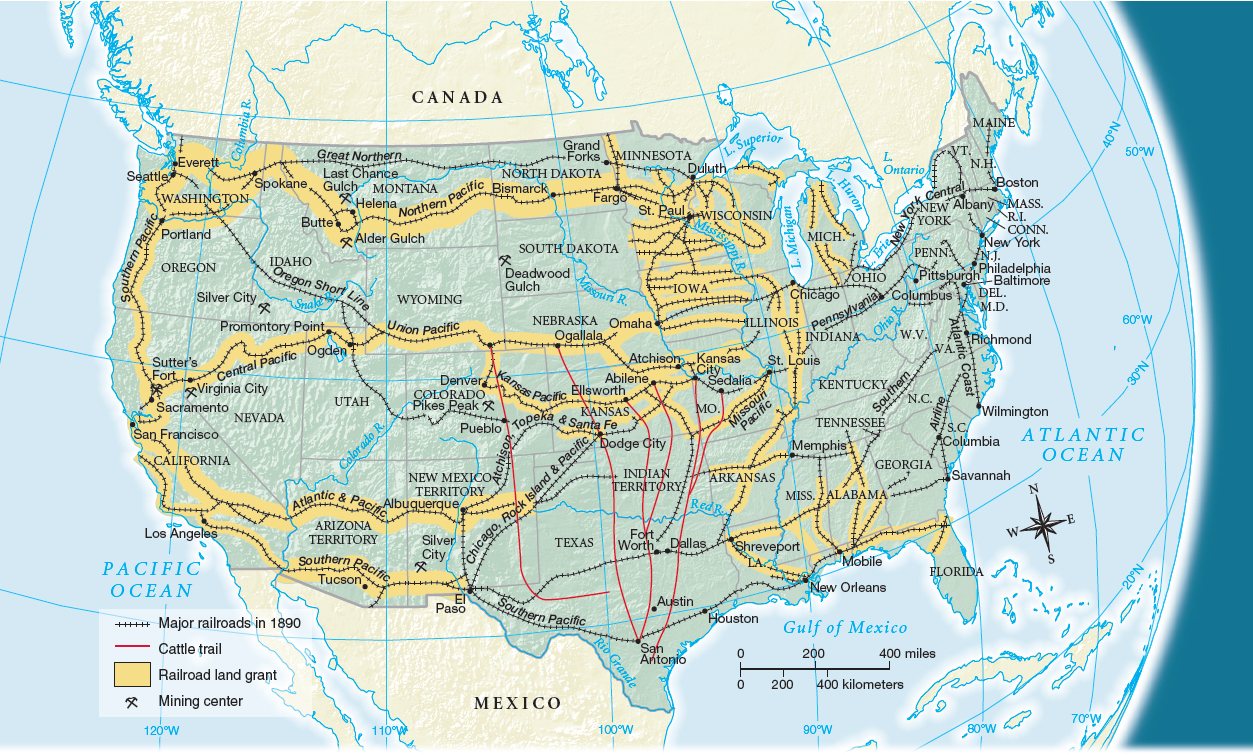Ranchers and Cowboys
Printed Page 508
Cattle ranchers followed the railroads onto the plains, establishing a cattle kingdom from Texas to Wyoming between 1865 and 1885. Cowboys drove huge herds, as many as three thousand head of cattle that grazed on public lands as they followed cattle tracks like the Chisholm Trail from Texas to railheads in Kansas.
Barbed wire, invented in 1874, revolutionized the cattle business and sounded the death knell for the open range. As the largest ranches in Texas began to fence, nasty fights broke out between big ranchers and “fence cutters,” who resented the end of the open range. One old-timer observed, “Those persons, Mexicans and Americans, without land but who had cattle were put out of business by fencing.” Fencing forced small-time ranchers who owned land but could not afford to buy barbed wire or sink wells to sell out for the best price they could get. The displaced ranchers, many of them Mexicans, ended up as wageworkers on the huge spreads owned by Anglos or by European syndicates.
CHAPTER LOCATOR
What did U.S. expansion mean for Native Americans?
In what ways did different Indian groups defy and resist colonial rule?
How did mining shape American expansion?
How did the fight for land and resources in the West unfold?
Conclusion: How did the West set the tone for the Gilded Age?
 LearningCurve
LearningCurve
Check what you know.

On the range, the cowboy gave way to the cattle king and, like the miner, became a wage laborer. Many cowboys were African Americans (as many as five thousand in Texas alone). Writers of western literature chose to ignore the presence of black cowboys like Deadwood Dick (Nat Love), who was portrayed as a white man in the dime novels of the era.
By 1886, cattle overcrowded the range. Severe blizzards during the winter of 1886–87 decimated the herds. “A whole generation of cowmen,” wrote one chronicler, “went dead broke.” Fencing worsened the situation. During blizzards, cattle stayed alive by keeping on the move. But when they ran up against barbed wire fences, they froze to death. In the aftermath of the “Great Die Up,” new labor-intensive forms of cattle ranching replaced the open-range model.